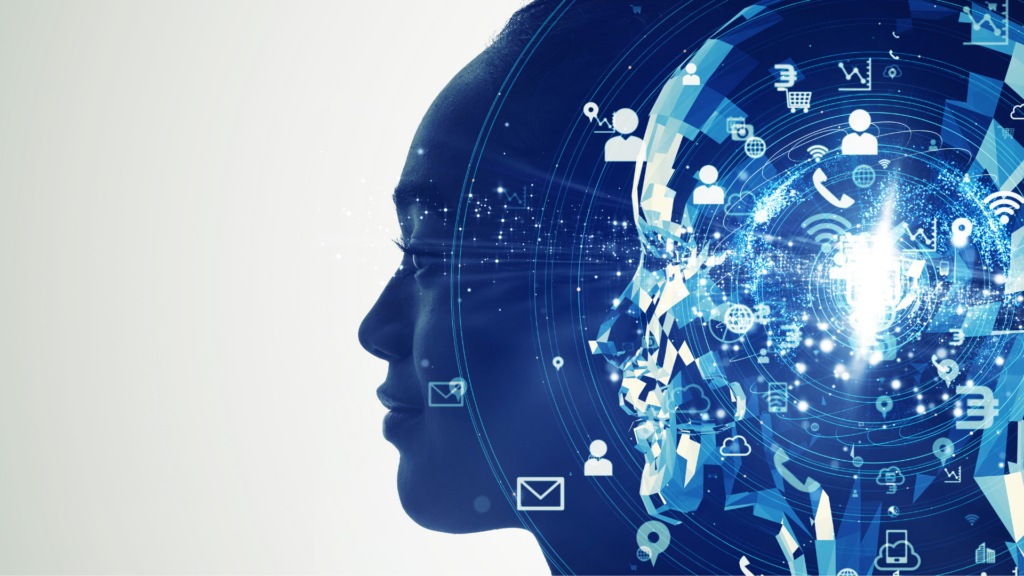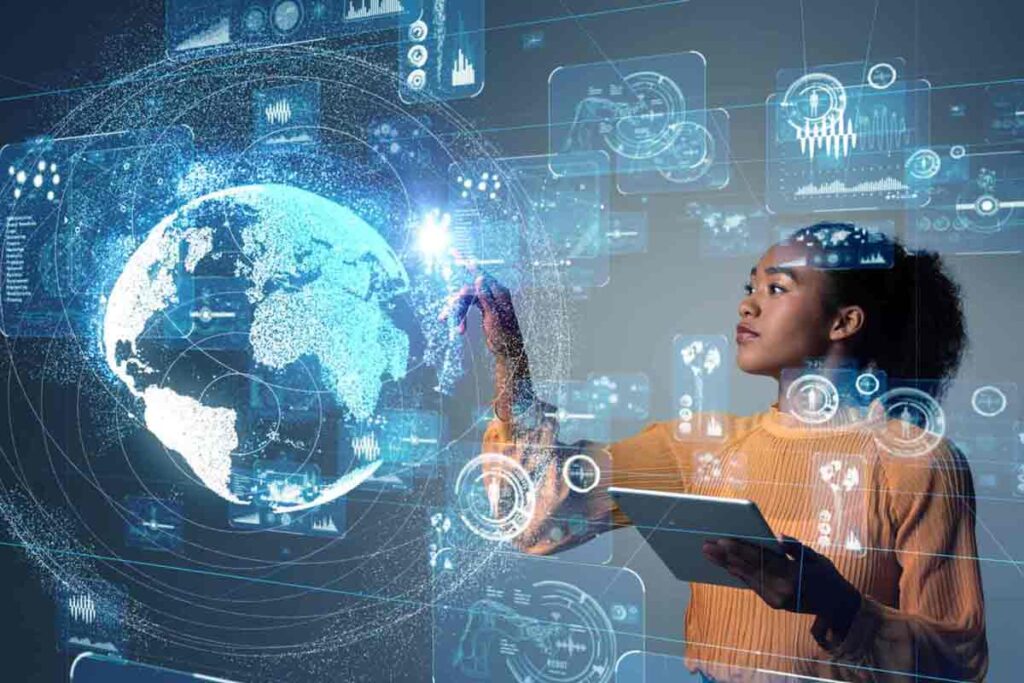Jobs
Generative AI’s Real-World Impact on Job Markets – Newsroom | University of St. Thomas

Generative artificial intelligence (gen AI) is now an increasing concern throughout the world, with numerous sectors buzzing about its potential and the associated concerns about job displacement. This introductory examination will look at what gen AI is, its capabilities, and the causes for these developing worries. We will specifically look at how gen AI affects men and women differently, as well as if it has a disproportionate influence on people of color and minorities.
Understanding generative AI
Gen AI, a subclass of artificial intelligence, specializes in creating content, images, music and having human-like conversations. Computer-generated art and music have their origins in the mid-20th century, though the earliest examples were quite primitive. From the late 20th to the early 21st century, the field advanced much thanks to the advent of neural networks and deep learning. PixelCNN and WaveNet enable the generation of complex data sequences such as natural language and audio waveforms, whereas transformer-based architectures such as OpenAI’s GPT (Generative Pre-Trained Transformer) have significantly improved the ability to generate coherent and contextually relevant text.
In practice, gen AI is altering several industries with its diverse applications. In manufacturing, it improves design efficiency, predicts maintenance requirements, and guarantees strong quality control. It aids in the production, optimization and testing of software code. Financial services gain from its ability to develop investment plans, produce compliance documentation and improve client-investor interactions. Gen AI is critical in the media and entertainment sectors for content production, event highlighting and content management, enhancing both creative and decision-making processes.
As gen AI evolves, it is critical to consider its possible influence on diverse demographic groups to ensure that benefits are delivered equally while limiting any negative consequences on the workforce and society. The purpose of the article is to look beyond the initial enthusiasm about gen AI and objectively assess how it is affecting labor markets, positively and negatively. By examining its practical influence, we want to gain a better grasp of the potential and challenges that lie ahead in this new era of artificial intelligence.
Related Content
The introduction of generative AI has significant consequences for labor markets across a variety of industries. This technology has the potential to increase efficiency and create new possibilities, but it also poses considerable dangers of job displacement, particularly in certain industries and positions.
The influence of AI on jobs highlights worries about job displacement, underlining the critical need for retraining. It emphasizes the importance of responding to technological advancements through continuing education, highlighting AI’s dual function in undermining existing professions while also increasing the need for new skills for future employment. Generative AI, in particular, excels at automating non-routine cognitive processes, creating a disruption risk across a wide range of vocations. According to a recent Goldman Sachs analysis, generative AI has the potential to automate up to 300 million full-time jobs in the U.S. and Europe. Furthermore, a McKinsey analysis predicts that by 2030, generative AI would automate 29.5% of the hours performed in the U.S. economy, up from 21.5% now.

Figure 1: With generative AI added to the picture, 30% of hours worked today could be automated by 2030 (2).
Furthermore, a Forrester projection indicates that, while generative AI may result in the loss of 1.5% or 2.4 million U.S. employment by 2030, it is projected to affect or transform a considerably bigger chunk of 6.9% or 11.08 million jobs. This suggests a tendency toward work augmentation rather than outright replacement, emphasizing generative AI’s transformational rather than purely disruptive potential.
- Vulnerable industries and roles
The industries and positions most vulnerable to the impact of generative AI include:
- Clerical and administrative work: Generative AI can automate tasks such as data entry, document processing and customer service, jobs often overlooked by women.
- Financial services: Roles such as investment analysis, compliance, and client-investor communication are all automated based on AI.
- Software development: Generative AI can assist in code generation, optimization and testing, potentially impacting software engineering jobs.
- Media and entertainment: Content creation, editing and management tasks can be streamlined by generative AI tools.
- Differential impact on men versus women
The effect of generative AI on employment markets is not gender neutral. According to research, this technology’s displacement may have a disproportionate impact on women.
- According to the Kenan Institute of Private Enterprise, 58.87 million women in the U.S. workforce work in occupations that are heavily reliant on generative AI technology. In comparison, the comparable figure for males is six out of 10, totaling over 48.62 million (10).
- The International Labor Organization (ILO) predicts that 7.8% of women’s occupations in high-income nations might be automated, totaling around 21 million jobs. In comparison, 2.9% of employment in high-income nations held by males, or around 9 million positions, have the potential to be automated, as indicated in Figure 2.

Figure 2: International Labour Organization graph on jobs with automation potential (9)
Women are disproportionately concentrated in white-collar, cognitive positions that are susceptible to generative AI automation, with an estimated 79% of working women employed in at-risk occupations (3). Men, on the other hand, are more evenly parted across white-collar and blue-collar professions, and thus are less subjected to the disruptive effects of generative AI overall. Professions where higher proportions of women may be employed such as clerical work, health care, and teaching, are among the most susceptible to the automation affected by generative AI.
Without appropriate regulation, reskilling efforts, and a practical approach to changeover management, the increasing usage of generative AI has the potential to impair current gender discriminations in the labor market.
Related Content

Demographic impacts of gen AI
- Disproportionate impact on minorities and underrepresented groups
The advent of generative AI raises the possibility of extremely affecting minority and marginalized groups in the labor market. According to a McKinsey analysis, Blacks are overrepresented in positions that are at high risk of automation, with 24% working in such roles compared to 20% for whites (4). This gap underlines the possibility that generative AI will have a more severe impact on Black communities, exacerbating existing racial inequities.
- Exacerbation of existing inequalities
The effect of generative AI on employment markets has the capacity to exacerbate existing inequality, markedly among women. According to a Euronews research, 79% of working women work in jobs with a high risk of automation, compared to 66% of males (3). This gender imbalance shows that the advent of generative AI may impair the current gender partition in the workforce.
A Worth Magazine report observed that, while the contrasts in generative AI acquaintance between men and women were less risky, men were still slightly more likely than women to work in jobs with “high exposure” (12.6% versus 11.2%) and “low exposure” (32% vs. 27.1%), while women were more likely than men to work in jobs with “moderate exposure” (61.6% vs. 55.4%) (5). This shows that women may be more susceptible to the disruptive impacts of generative AI in the labor market.
- Risk of bias and inadequate diversity
The creation of generative AI systems includes the inherent danger of bias and inadequate diversity, potentially aggravating unfair imbalances in the workforce (6). Without broad participation in AI system design and development, biases that disproportionately affect minorities and marginalized groups are more likely to persist.
According to the McKinsey report, overcoming these difficulties will need a collaborative effort to guarantee that generative AI systems are built with inclusion, justice, and diversity in mind (4). This involves ensuring that the data used to train foundation models is objective, legitimate, and devoid of racial, ethnic, gender, and other biases. Additionally, improving and developing the pool of minority tech talent will aid to ensure that generative AI is developed and steered into the future by a miscellaneous talent base with various experiences and viewpoints.
The Euronews article also highlights the need of participatory design, which expects all stakeholders in generative AI applications, comprising end users and those affected by new uses, to be involved in the building of new AI products. This approach can assist to reduce the vulnerability of bias and lack of diversity in the creation of generative AI systems.
Related Content

Strategies for mitigation and adaptation
- Reskilling and upskilling the workforce
As generative AI continues to disrupt the job market, reskilling and upskilling the workforce will be important to cut down the disproportionate effect on minorities and marginalized groups (4). It is essential to provide workers with training and educational prospects to aid them gain new skills and amend to the changing employment landscape, especially those in high-risk jobs. This will enable workers to transition to roles that are less sensitive to automation while still leveraging the potential of generative AI to foster their productivity and value (5).
- Policy and regulatory approaches
Policymakers and regulators must take positive measures to guarantee equal access and division of the advantages of generative AI. This encompasses enacting regulations that promote corporations to engage in reskilling and retraining programs, particularly for employees from underrepresented populations. Furthermore, legal frameworks should be created to address concerns of bias, transparency, and accountability in the development and deployment of generative AI systems. These strategies can assist to reduce the danger of aggravating current disparities in the labor market.
- Diverse and inclusive AI development teams
Promoting diversity and inclusion in teams progressing general AI systems is necessary to reduce bias and ensure technology aid all sectors of society. By bringing together people from diverse backgrounds, with several experiences and perceptions, the development process can better address the needs and interests of underrepresented groups. This method can help design more equitable and inclusive AI applications that benefit all stakeholders.
This article offers an examination of how generative AI technology reshapes sectors, covering both potential and difficulties. As this technology improves, its promise to improve efficiency and creativity becomes obvious. However, it also offers major dangers of employment displacement, particularly for women and minority groups. The disproportionate concern on these populations emphasizes the critical need for comprehensive policies and reskilling efforts to decrease inequity. Positive efforts are required to ensure that the advantages of generative AI are distributed equitably, avoiding intensifying existing gaps and providing a workforce equipped for future technological landscapes. Maintaining diverse perspectives in AI research and deployment is also critical for excluding possible biases and creating an inclusive digital economy.

Dr. Manjeet Rege is a distinguished academic and industry leader in the fields of data science and artificial intelligence. As a professor and the chair of the Department of Software Engineering and Data Science at the University of St. Thomas, he has made substantial contributions to the academic world, evidenced by his recognition as a Leading Academic Data Leader for 2023 by CDO Magazine. Rege also serves as the director of the Center for Applied Artificial Intelligence at the University of St. Thomas, where he oversees initiatives that blend academic research with practical applications in AI. His expertise is acknowledged internationally, demonstrated by the establishment of a chair professorship and analytics lab in his name at Woxsen University in Hyderabad, India, to celebrate his significant contributions in analytics. As a thought leader, author, mentor, and keynote speaker, Rege is often featured in the media, offering his expert thoughts and opinions on the latest developments in machine learning and AI. Rege serves as an adviser to various organizations to provide guidance on data strategy and imparting technical AI expertise. His work has been published in various peer-reviewed reputed publications, he serves on the editorial review board of journals and regularly participates on the program committees of various international conferences.

Dr. Hemachandran Kannan is the director of the AI Research Centre, associate dean of the School of Business, and area chair of the Analytics Department at Woxsen University. He is an ambassador of the AI Accelerator Institute and an advisory board member in many international and national companies such as AptAI Labs, USA, Agzitence Pvt, Ltd, and many more. He served as an effective resource person at various national and international scientific conferences and also gave lectures on topics related to Artificial Intelligence. Currently serving as Expert at UNESCO and ATL Mentor of Change. He has edited seven books and authored three books. He was bestowed as Best University Faculty Award at Woxsen University for two consecutive years, 2022-23 and 2021-22, and also at Ashoka Institute of Engineering and Technology in 2019-20. He is an expert in natural language processing, computer vision, building video recommendation systems, and autonomous robots. He is working on various real-time use cases and projects in collaboration with industries across the globe.







:max_bytes(150000):strip_icc()/roundup-writereditor-loved-deals-tout-f5de51f85de145b2b1eb99cdb7b6cb84.jpg)


